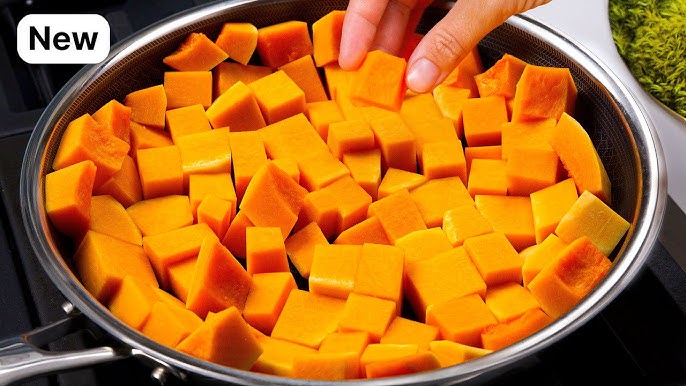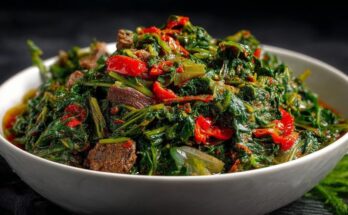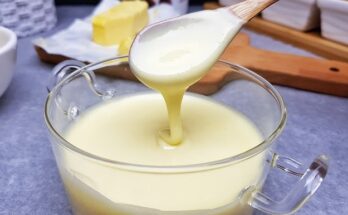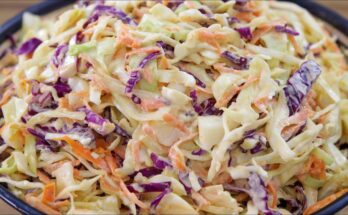Butternut Squash Recipe: Butternut squash is a versatile and nutritious vegetable that has become a staple in kitchens around the world. Whether roasted, mashed, or turned into soups and sauces, its sweet and nutty flavor makes it a favorite during fall and winter.
In this guide, we’ll walk you through the process of preparing butternut squash in various delicious ways. From roasting to soups, casseroles, and risottos, you’ll learn step-by-step methods to master this ingredient.
Health Benefits of Butternut Squash
Butternut squash isn’t just tasty—it’s packed with nutrients.
- Nutritional Value:
It’s rich in vitamins A, C, and E, providing excellent antioxidants that support immunity and skin health. - Key Vitamins and Minerals:
Butternut squash contains potassium, magnesium, and fiber, making it great for heart health and digestion. - Health Advantages:
It promotes healthy vision, reduces inflammation, and supports weight loss due to its low-calorie content.
Whether you’re following a healthy diet or just looking for comforting meals, butternut squash fits perfectly into any lifestyle.
Ingredients Needed for Butternut Squash Recipe
Before starting, let’s gather the ingredients:
Main Ingredients
- 1 medium butternut squash (about 2-3 pounds)
- 2 tablespoons olive oil
- 1 teaspoon salt
- ½ teaspoon black pepper
Optional Add-ons for Flavor Variations
- 1 teaspoon garlic powder or minced garlic
- 1 teaspoon smoked paprika or cumin
- 2 tablespoons maple syrup for sweetness
- Fresh herbs like rosemary, thyme, or parsley
These ingredients allow flexibility to create savory or sweet dishes based on your preference.
Kitchen Tools Required
To make the process easier, ensure you have the following tools:
- Chef’s Knife – For peeling and cutting.
- Vegetable Peeler – Helps remove the tough skin.
- Cutting Board – Provides a stable surface.
- Spoon or Scoop – For removing seeds.
- Baking Sheet – For roasting squash cubes.
- Blender or Food Processor – Useful for making purees and soups.
Having these tools ready saves time and ensures smooth preparation.
Preparing the Butternut Squash
The first step to any recipe is properly preparing the squash.
How to Peel and Cut the Squash
- Peel the Skin – Use a vegetable peeler or knife to remove the outer skin. Hold the squash firmly to avoid slips.
- Cut in Half – Slice off both ends, then cut the squash lengthwise.
- Remove Seeds – Use a spoon to scoop out the seeds and stringy pulp from the hollow center.
- Cube the Flesh – Slice into even cubes for roasting or dicing based on your recipe needs.
Tips for Easier Handling
- Microwave the squash for 2 minutes to soften the skin for easier peeling.
- Use a sharp knife for clean cuts and to avoid injury.
Step 1: Roasting the Butternut Squash
Roasting enhances the flavor and caramelizes the natural sugars in butternut squash.
Prepping for Roasting
- Preheat the oven to 400°F (200°C).
- Toss the cubed squash with olive oil, salt, pepper, and any desired seasonings.
- Spread the cubes evenly on a baking sheet lined with parchment paper.
Baking Temperature and Timing
- Roast for 25–30 minutes, flipping halfway for even browning.
- Test doneness by piercing the pieces with a fork—they should be tender and golden brown.
Roasted squash can be enjoyed as a side dish or used in other recipes like soups and casseroles.
Step 2: Making Butternut Squash Soup
For a creamy and comforting dish, butternut squash soup is an excellent choice.
Cooking Process for Soup
- Sauté onions and garlic in olive oil until soft.
- Add roasted squash, vegetable broth, and a pinch of nutmeg for flavor.
- Simmer for 10–15 minutes to allow flavors to blend.
Blending and Seasoning
- Use an immersion blender or transfer the mixture to a standard blender for smooth consistency.
- Adjust seasoning with salt, pepper, and a drizzle of cream or coconut milk for richness.
Step 3: Butternut Squash Puree
Butternut squash puree is a versatile dish that can be used as a side, baby food, or a base for soups and sauces.
Blending Techniques
- After roasting or boiling the squash, allow it to cool slightly.
- Transfer the cooked squash to a blender or food processor.
- Add a small amount of vegetable broth, milk, or cream for a smoother texture.
- Blend until silky and smooth, adding liquid gradually to achieve the desired consistency.
Storing and Serving Suggestions
- Storage: Refrigerate the puree in an airtight container for up to 5 days or freeze it for 3 months.
- Serving Ideas: Use it as a topping for roasted meats, a filling for ravioli, or mixed with pasta for a creamy sauce.
- Baby Food Option: Avoid adding salt or spices for babies under 1 year old.
This puree is a healthy and adaptable addition to any meal plan.
Step 4: Butternut Squash Risotto
If you’re craving something rich and hearty, butternut squash risotto is a must-try dish.
Ingredients for Risotto
- 1 cup Arborio rice
- 4 cups vegetable or chicken broth, warmed
- 1 small onion, diced
- 2 tablespoons olive oil or butter
- 1 cup roasted butternut squash cubes
- ½ cup grated Parmesan cheese
- Salt, pepper, and thyme for seasoning
Cooking Instructions
- Sauté the Onion – Heat olive oil in a large pan and cook the diced onion until translucent.
- Add Rice – Stir in the Arborio rice and toast for 2 minutes.
- Deglaze the Pan – Add ½ cup of white wine (optional) and let it absorb completely.
- Gradually Add Broth – Add warm broth, one ladle at a time, stirring frequently until the liquid is absorbed before adding more.
- Incorporate Squash – Stir in the roasted butternut squash cubes during the last 5 minutes of cooking.
- Finish with Cheese – Add grated Parmesan and season with salt and pepper.
This creamy risotto pairs well with grilled chicken or fish and is perfect for a cozy dinner.
Step 5: Butternut Squash Casserole
Butternut squash casserole is a crowd-pleasing dish, perfect for holidays and gatherings.
Layering the Casserole
- Prepare the Base – Mash roasted butternut squash and mix it with eggs, milk, and spices like cinnamon and nutmeg for flavor.
- Add a Crunchy Topping – Combine breadcrumbs, crushed nuts, or shredded cheese for texture.
- Layer and Bake – Spread the mixture in a greased baking dish, add the topping, and bake at 375°F (190°C) for 25–30 minutes until golden brown.
Baking Tips and Tricks
- Check Doneness: The casserole should be set in the center and slightly crispy on top.
- Variations: Add cooked bacon or sausage for a savory twist, or sprinkle brown sugar for added sweetness.
This recipe is ideal for potlucks, family dinners, and festive occasions.
Step 6: Butternut Squash Pasta Sauce
Turn butternut squash into a creamy pasta sauce for an easy and elegant meal.
Making Creamy Squash Sauce
- Roast or boil squash until tender.
- Blend it with vegetable broth, garlic, and heavy cream for a rich texture.
- Add Parmesan cheese, nutmeg, and black pepper for flavor.
Combining with Pasta
- Toss the sauce with cooked pasta like fettuccine, penne, or spaghetti.
- Add sautéed spinach, mushrooms, or grilled chicken for extra protein.
- Garnish with fresh basil and a sprinkle of grated cheese before serving.
This sauce is a healthier alternative to traditional cream-based sauces and works well for weeknight dinners.
Alternative Methods for Cooking Butternut Squash
If roasting isn’t your preferred method, here are some quicker alternatives:
Steaming and Boiling Methods
- Steaming: Place cubed squash in a steamer basket over boiling water. Cover and steam for 10–15 minutes until tender.
- Boiling: Add cubes to a pot of boiling water and cook for 8–12 minutes until soft. Drain and season as desired.
Microwave Cooking for Quick Preparation
- Cut the squash in half and remove seeds.
- Place it cut-side down in a microwave-safe dish with a small amount of water.
- Cover and microwave on high for 8–10 minutes until fork-tender.
These methods are perfect for busy schedules or last-minute recipes.
Flavor Variations and Seasoning Ideas
Enhance the flavor of butternut squash with these simple ideas:
- Savory Options: Garlic, onion, thyme, rosemary, sage, and Parmesan.
- Sweet Options: Cinnamon, nutmeg, maple syrup, and brown sugar.
- Spicy Options: Chili flakes, cayenne pepper, and smoked paprika.
Experiment with different seasonings to match your taste preferences and dietary needs.
Storage Tips for Leftover Butternut Squash
Proper storage keeps your butternut squash fresh and flavorful.
Refrigeration and Freezing Techniques
- Refrigerate: Store cooked squash in airtight containers for 3–5 days.
- Freeze: Freeze puree or roasted pieces in freezer bags for up to 3 months.
Reheating Tips
- Warm leftovers in the microwave or oven at 350°F (175°C) until heated through.
- Add a splash of broth or milk to soups and purees to restore consistency.
Serving Suggestions and Pairing Ideas
Wondering what to serve with butternut squash dishes?
- Side Dishes: Serve roasted squash with quinoa, rice, or leafy green salads.
- Main Course Pairings: Complement risotto or pasta with grilled chicken, turkey, or salmon.
- Beverages: Pair with white wines like Chardonnay or Sauvignon Blanc, or sparkling cider for non-alcoholic options.
Common Mistakes to Avoid
Avoid these errors to make your butternut squash recipes a success:
- Overcooking or Undercooking: Always check for tenderness with a fork.
- Improper Seasoning: Taste-test as you cook to balance flavors.
- Storage Errors: Cool completely before storing leftovers to avoid spoilage.
FAQs about Butternut Squash Recipe
1. How do I select the best butternut squash for cooking?
Choose a butternut squash that feels heavy for its size. The skin should be smooth and firm, without any cracks or soft spots. A matte finish on the skin rather than a glossy one is a good indicator of ripeness.
2. What’s the easiest way to peel and cut butternut squash?
Peeling butternut squash is easier with a sturdy vegetable peeler. Once peeled, slice the squash in half lengthwise, scoop out the seeds, and cut it into cubes or slices depending on your recipe. For safety, stabilize the squash on a flat surface while cutting.
3. Can butternut squash be cooked in the microwave?
Yes, to cook butternut squash in the microwave, first pierce the skin several times with a fork. Cut it into large pieces, scoop out the seeds, and place the pieces in a microwave-safe dish with a bit of water. Cover and microwave on high for about 10-12 minutes or until tender.
4. What spices go well with butternut squash?
Butternut squash pairs wonderfully with a range of spices. Cinnamon, nutmeg, and allspice bring out its natural sweetness, while savory options like thyme, sage, and black pepper can complement its rich flavor.
5. How can I make butternut squash soup?
To make butternut squash soup, sauté onions and garlic in olive oil until soft. Add peeled and cubed butternut squash, vegetable stock, and your preferred seasonings. Simmer until the squash is tender. Blend the mixture until smooth and creamy. Adjust seasoning and serve hot.
6. Is butternut squash healthy?
Butternut squash is highly nutritious, rich in vitamins A and C, potassium, fiber, and magnesium. It’s low in calories, making it a great addition to a healthy diet.
6. Is butternut squash healthy?
Yes, butternut squash can be frozen. Cook it first by roasting or boiling, then cube or mash the flesh. Freeze in an airtight container or freezer bag. Properly stored, it can last for up to 8-12 months.
Conclusion
Butternut squash is a versatile and nutrient-packed ingredient that can be used in countless recipes. From roasting to soups, casseroles, and risottos, it offers endless possibilities to create comforting and flavorful dishes. With the tips and techniques shared in this guide, you’re ready to master the art of cooking butternut squash.



